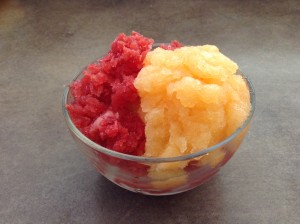Another Reason to Plan Your Meals
/It’s been unavoidable this past week. Every newscast seems to be talking about how the low Canadian dollar is going to mean increasing food costs. Ugh. Not exactly the news that we want to hear after the expensive holiday season. But, in looking for the silver lining, I’m choosing to see this as one more reason for you to plan your meals. Why? Because when you plan your meals and shop for the food that you’ll need to make those meals, you end up wasting less food. Less food in the garbage means more money in your pocket. Period.
Not convinced yet? When I suggest creating a meal plan, often people respond something like:
“I’m already crazy-busy. How am I supposed to add one more thing to my life?!”
I agree that at first it seems like making a meal plan is adding more to your already overly full schedule.
But, in reality it actually saves time and stress.
A good portion of the stress of making dinner each night is figuring out what the heck you’ll make. Many parents admit that this thought (and it’s stress/ worry/ fear) starts creeping into their minds at about 4pm.
Not having a plan leaves you multi-tasking to come up with some idea while you’re finishing up your work day, rushing to pick the kids up from daycare, and fighting the traffic to get home and/or to extra-curricular activities. Not having a plan likely means creating an extra task of running in to the grocery store, with kids in tow, when the store is at it’s busiest. Not fun.
While it does take time to sit down and create a meal plan, doing so will save you hours of stress each week.
Does the structure of a meal plan make you feel constrained? Remember that it’s your plan – change it whenever you want! Did you plan to make a complicated, new recipe tonight but you had an awful day and all you want to do is order pizza? Order the pizza! And revise your plan so that the ingredients that you bought for that new dish are used up before they go bad.
Not convinced? Give it a try, just for this month. What do you have to lose?






















